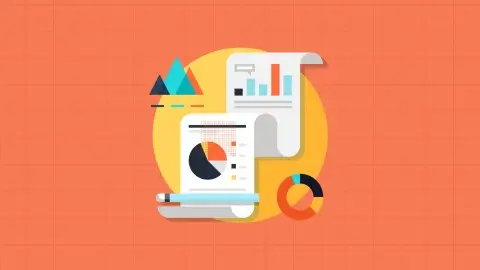Introduction To Statistics
Last updated 3/2018
MP4 | Video: h264, 1280x720 | Audio: AAC, 44.1 KHz
Language: English | Size: 413.18 MB | Duration: 2h 39m
Last updated 3/2018
MP4 | Video: h264, 1280x720 | Audio: AAC, 44.1 KHz
Language: English | Size: 413.18 MB | Duration: 2h 39m
Introductory Statistics as Covered in the Social, Behavioral, and Natural Sciences
What you'll learn
Understand and learn how to calculate a number of different descriptive statistics
Increase your quantitative and numerical reasoning skills!
Increase marketable job skills in data analytics
Requirements
No special software or other materials are required.
Description
November, 2019In the course, you will learn how to easily and effectively analyze and interpret data involving introductory statistics. The following topics are covered in this course:Scales of measurement - nominal, ordinal, interval, ratio. Goal/Learning Objective: Easily understand the often-confused scales of measurement covered in most statistics texts.Central Tendency - mean, median, and mode are illustrated along with practice problems; measures of central tendency and skewed distributions are explained, as well as how to calculate the weighted mean. Goals/Learning Objectives: Summarize a set of data, find the center location in a distribution of scores, understand and identify the location of measures of central tendency in skewed distributions, understand and interpret how to find the overall or combined mean for two different sets of data.Variability - How to calculate the standard deviation and variance as well as how to interpret percentiles are provided in simple and clear language. Goals/Learning Objectives: Understand and explain variability (spread) in a set of numbers, including how to rank data and interpret data such as standardized test scores (for example, the 95th percentile).Charts and Graphs - How to calculate a cumulative frequency distribution table as well as how to calculate a stem and leaf plot is illustrated. Goals/Learning Objectives: Learn how to easily organize, summarize, understand, and explain a set of numbers.Probability, the Normal Curve and z-Scores - An introduction to probability is provided, along with properties of the normal distribution and how to calculate and interpret z-scoresGoals/Learning Objectives: Understand beginning probability including important characteristics of the normal (Gaussian) distribution, as well as how to calculate and interpret z-scores.Bonus Features: Cement understanding with practice opportunities including several quizzes with complete video coverage of the solutions. Update: New Videos Added on Hypothesis Testing and on Correlation! (See Sections 6 and 7 of the Course.)
Overview
Section 1: Course Introduction and Introduction to Statistics
Lecture 1 Course Introduction
Lecture 2 Scales of Measurement
Section 2: Central Tendency
Lecture 3 Mean, Median, and Mode (Measures of Central Tendency)
Lecture 4 Video Review of Quiz - Mean, Median, and Mode
Lecture 5 Central Tendency and Skewed Distributions
Lecture 6 Video Review of Quiz - Central Tendency and Skewed Distributions
Lecture 7 The Weighted Mean
Lecture 8 Video Review of Quiz - The Weighted Mean
Section 3: Variability
Lecture 9 Percentiles
Lecture 10 Calculating the Standard Deviation and Variance – Step by Step
Lecture 11 Video Review of Quiz - Standard Deviation and Variance
Section 4: Charts, Tables, and Graphs
Lecture 12 How to Create a Frequency Distribution Table
Lecture 13 How to Create a Cumulative Frequency Distribution Table
Lecture 14 How to Create Stem and Leaf Plot
Section 5: Probability, the Normal Curve and z-Scores
Lecture 15 Probability
Lecture 16 Normal Curve and z-Scores (68, 95, 99.7 Rule)
Lecture 17 Properties of the z Score Normal Distribution
Lecture 18 Video Review of Quiz - Properties of the z-Score Normal Distribution
Lecture 19 Solving for z-Scores
Lecture 20 Video Review of Quiz - Solving for z-Scores
Lecture 21 Solving for X Given a z-Score
Lecture 22 Video Review of Quiz - Solving for X Scores Given a z-Score
Section 6: Hypothesis Testing
Lecture 23 Hypothesis Testing - Two Tailed Tests
Lecture 24 Two Tailed Hypothesis Tests - Examples
Lecture 25 Hypothesis Testing - One Tailed Tests
Lecture 26 One Tailed Hypothesis Tests - Examples
Lecture 27 Type I and Type II Errors Explained
Lecture 28 What is a P-Value?
Lecture 29 P Value = .000 ???
Lecture 30 Power
Section 7: Correlation
Lecture 31 How To Calculate a Correlation
Lecture 32 How To Test a Correlation for Significance
Section 8: Conclusion
Lecture 33 Conclusion
Those interested in learning more about descriptive statistics should take this course (those interested only in inferential statistics should not take the course)



